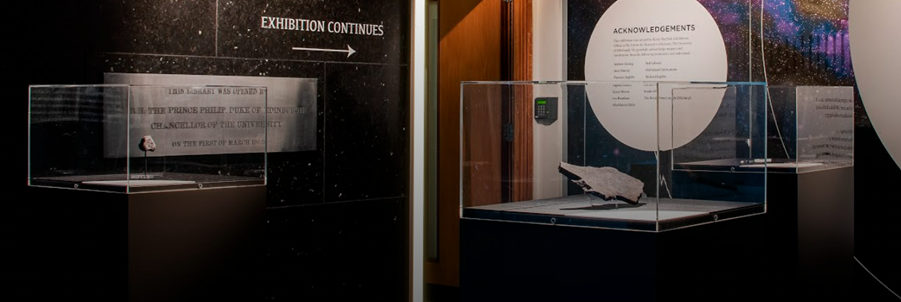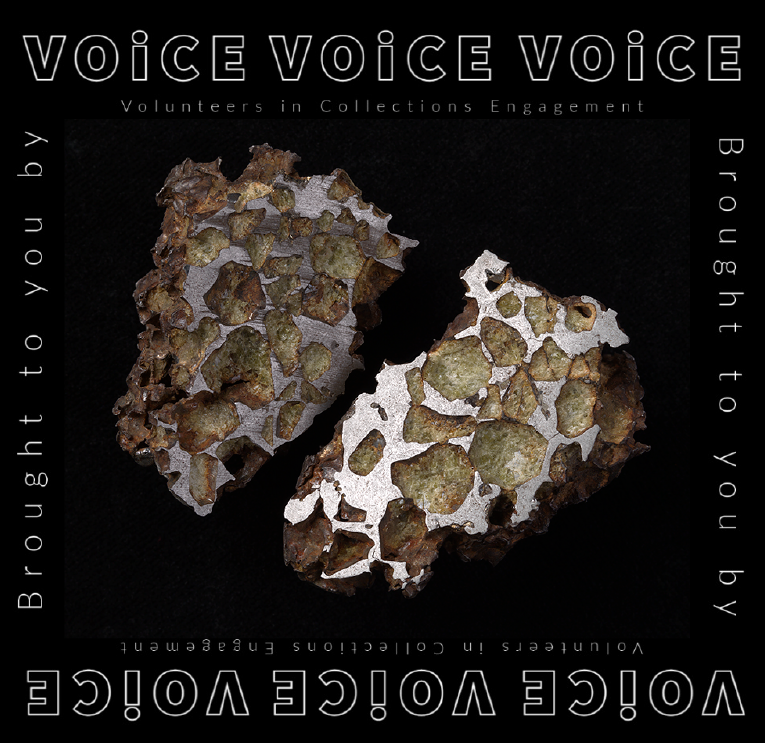(Above image of Imilac stony iron pallasite meteorite photographed by Malcolm Brown)
Of particular interest is the selection of meteorites exhibited. Described as a small sample of ‘debris from planets or asteroids,’ meteorites make up some of the oldest material in the University’s collections and are the ‘principal source of extra-terrestrial material’ for research. From left to right, the samples used in Astronomy Victorious are named Allende, Gibeon and Stannern. The name of a meteorite refers to the larger meteor or meteor shower that the sample belonged to, and so each of these small sections are representative of a more substantial event.

Allende is often described as the ‘best-studied meteorite in history’ due to its significance as the largest carbonaceous chondrite ever found on Earth. It has scientifically notable calcium-aluminium-rich inclusions, which are among the oldest objects formed in the Solar System. The original meteor hit Earth in the northern Mexican state of Chihuahua in 1969, and meteorites belonging to it can be found widely distributed around the world today.
The Gibeon meteorite fell over the Gibeon region of Namibia in prehistoric times and is composed of an iron-nickel alloy. It was discovered by the Nama people and used for making weapons and tools, before Englishman J. E. Alexander collected samples for study in London. Following in depth analysis, pieces still in Namibia were collected and constructed into a fountain in the capital, Windhoek.
Lastly, Stannern fell in 1808 as part of an observed shower in an area now covered by the Czech Republic. Small samples of the stony meteorite were located by Austrian naturalist Karl Schreibers, and can now be seen all over the world.
These three meteorites are part of the University’s Meteorite Collection, which consists of approximately 70 meteorites in total and sits within the larger Geology Collection. More information about these items, the collections and Astronomy Victorious can be found below.
Further information and resources:
Astronomy Victorious via Google Arts and Culture: https://artsandculture.google.com/story/MQWxeknrHcathQ
Meteorite Collection: https://collections.ed.ac.uk/record/673
Geology Collection: https://collections.ed.ac.uk/record/300
Some close up images of items from the Meteorite collection: http://libraryblogs.is.ed.ac.uk/diu/type/image/
Written by Catherine

